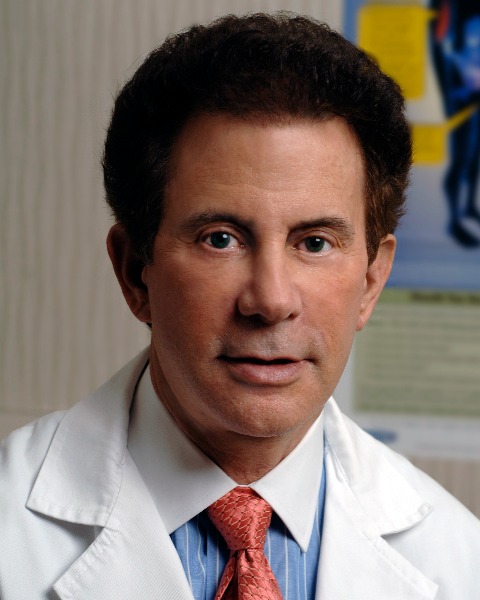Back
Introduction: Affecting 1% of men, non-obstructive azoospermia (NOA) is the absence of sperm in the ejaculate, and is the most severe form of male infertility. Currently, men with NOA have decreased chances of conceiving a child of their own. Despite recent progress in reproductive medicine, men with NOA have essentially one invasive and expensive procedure to isolate sperm (microdissection testicular sperm extraction or mTESE). Unfortunately, mTESE has a ~50% failure rate. Here we present the use of an innovative DNA methylation-based technology to non-invasively predict the presence of sperm in the testicle of men with NOA.
Methods: At a single academic center biopsies (N=18) and azoospermic semen samples (N=5) were procured from consented men who had undergone a testicular aspirate, biopsy, or mTESE procedure. Utilizing new epigenetic technology, the biopsies and semen samples were analyzed for sperm-specific DNA. Specifically, these samples were analyzed for a sequence of DNA that can distinguish sperm cells from all other somatic cells via a unique methylation pattern. The quantity of sperm-specific DNA can be used to determine the absence (men with <0.25 ratio of sperm to somatic DNA) or presence (>0.5 ratio of sperm to somatic DNA) of sperm in the testicles. These ratios were defined for each sample and compared to clinical outcomes of the TESA, TESE or mTESE procedures.
Results: Out of the 18 biopsies, 13 had >0.5 ratios of sperm DNA to somatic cell DNA in the testicular biopsies. All of these men were found to have sperm in their biopsies as defined from the clinical notes. 3 of the 18 men had <0.25 ratios of sperm DNA to somatic cell DNA. Again, consistent with previous analysis, none of these men had sperm in their biopsies. The remaining 2 men had ratios between 0.26 – 0.49, with one having sperm in his biopsy and one without sperm. Of the 5 azoospermic semen samples with associated TESA results, 3 has ratios of <0.25 and all 3 had no sperm in the corresponding TESA samples. 2 semen samples had ratios of >0.5 and were confirmed to have sperm in the TESA sample.
Conclusions: In the analysis of testicular biopsies and semen samples, the sperm-specific DNA methylation ratios of <0.25% or >0.5% were 100% predictive of either the absence or presence of sperm in the testicle. With these data the next steps of our work will focus on continued analysis of sperm-specific cfDNA in seminal plasma to predict the presence or absence of sperm prior to a testicular extraction procedure. The ultimate goal will be to develop a non-invasive and cost-effective way to avoid unnecessary surgical procedures. SOURCE OF
Funding: Venture Capital
Moderated Poster Session
Session: MP30: Infertility: Epidemiology & Evaluation I
MP30-06: A Unique Epigenetic-Based Test to Accurately Predict Successful TESE and mTESE Outcomes
Saturday, April 29, 2023
7:00 AM – 9:00 AM CST
Location: S505

Larry I. Lipshultz, MD
Professor of Urology
Baylor College of Medicine
Poster Presenter(s)
Introduction: Affecting 1% of men, non-obstructive azoospermia (NOA) is the absence of sperm in the ejaculate, and is the most severe form of male infertility. Currently, men with NOA have decreased chances of conceiving a child of their own. Despite recent progress in reproductive medicine, men with NOA have essentially one invasive and expensive procedure to isolate sperm (microdissection testicular sperm extraction or mTESE). Unfortunately, mTESE has a ~50% failure rate. Here we present the use of an innovative DNA methylation-based technology to non-invasively predict the presence of sperm in the testicle of men with NOA.
Methods: At a single academic center biopsies (N=18) and azoospermic semen samples (N=5) were procured from consented men who had undergone a testicular aspirate, biopsy, or mTESE procedure. Utilizing new epigenetic technology, the biopsies and semen samples were analyzed for sperm-specific DNA. Specifically, these samples were analyzed for a sequence of DNA that can distinguish sperm cells from all other somatic cells via a unique methylation pattern. The quantity of sperm-specific DNA can be used to determine the absence (men with <0.25 ratio of sperm to somatic DNA) or presence (>0.5 ratio of sperm to somatic DNA) of sperm in the testicles. These ratios were defined for each sample and compared to clinical outcomes of the TESA, TESE or mTESE procedures.
Results: Out of the 18 biopsies, 13 had >0.5 ratios of sperm DNA to somatic cell DNA in the testicular biopsies. All of these men were found to have sperm in their biopsies as defined from the clinical notes. 3 of the 18 men had <0.25 ratios of sperm DNA to somatic cell DNA. Again, consistent with previous analysis, none of these men had sperm in their biopsies. The remaining 2 men had ratios between 0.26 – 0.49, with one having sperm in his biopsy and one without sperm. Of the 5 azoospermic semen samples with associated TESA results, 3 has ratios of <0.25 and all 3 had no sperm in the corresponding TESA samples. 2 semen samples had ratios of >0.5 and were confirmed to have sperm in the TESA sample.
Conclusions: In the analysis of testicular biopsies and semen samples, the sperm-specific DNA methylation ratios of <0.25% or >0.5% were 100% predictive of either the absence or presence of sperm in the testicle. With these data the next steps of our work will focus on continued analysis of sperm-specific cfDNA in seminal plasma to predict the presence or absence of sperm prior to a testicular extraction procedure. The ultimate goal will be to develop a non-invasive and cost-effective way to avoid unnecessary surgical procedures. SOURCE OF
Funding: Venture Capital
